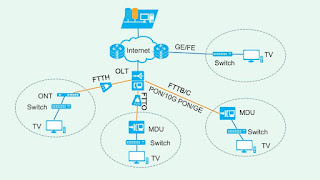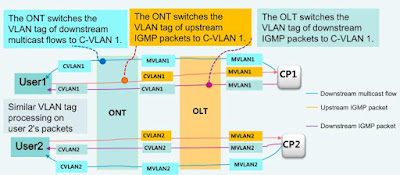| Definition | ||
| Multicast is group communication where data is addressed to a group of destination
hosts simultaneously. Each multicast address represents a multicast group and all hosts in a multicast group can receive the same data. Multicast applies in IPTV,multimedia conferencing, and gaming services. |
||
| Value | ||
| Reduces bandwidth overheads | ||
| Each link carries at most one copy of the same multicast data, maximally reducing bandwidth overheads. | ||
| Decreases load | ||
| Transmitting data in multicast mode decreases video server's and CPU's load and does not significantly increase network's load even if the number of users increases. | ||
| Prolongs transmission distance | ||
| Multicast packets can be transmitted across network segments,implementing long-distance transmission for large-scale data. | ||
| Prolongs transmission distance | ||
| Multicast packets can be transmitted across network segments,implementing long-distance transmission for large-scale data. | ||
| Application | ||
| Multicast applies in the following scenarios: FTTB/FTTC, FTTH, FTTO, as well as OLT user ports connecting to multicast users. | ||
| Highlights | ||
| Powerful Multicast Capabilities, Improving IPTV Service Deployment | ||
| Primary Features | Performance | |
|
|
|
| Features | ||
|
||
| Highlights |
| Conversion Between M-VLANs and C-VLANs, Implementing Multiple CPs Sharing One ONT and Supporting Open Access |
| The multicast data transmission meets the service requirement of multiple CPs renting different ports on the same ONT in the open access scenario, improving revenue from resources. |
| Layer 3 Multicast for Flexible Multicast Group Address Usages |
| The programs issued from different multicast sources can use the same group IP address (GIP). |
| Compared with Layer 2 multicast, Layer 3 multicast relieves GIP limitations due to group MAC address (GMAC) conflict. |
| Highlights |
| Comprehensive Fault Locating Methods, Facilitating Rapid Multicast Service Fault Rectification |
| User Log | Identify causes for program ordering failures by querying user logs or fault-related operation records. |
| IGMP Statistics | Identify IGMP packet transmit and receive issues based on IGMP packet statistics. |
| Multicast Traffic Statistics | Based on multicast traffic statistics, determine whether:
|
| Multicast Emulation | Emulate program ordering performed by a multicast user to locate faults by querying traffic and user information in real time. |
| Board recommendation |
| Specifications | H802SCUN | H801SCUH | H801SCUK |
| Number of multicast logs | 32768 | 32768 | 32768 |
| IGMP packet processing capability | 400 pps | 3200 pps | 400 pps |
| Number of multicast users | If GPON service
boards are used: 8192 If other service boards are used: 2048 |
If GPON service boards are used: 16384 If other service boards are used: 2048 |
If GPON service boards are used: 8192 If other service boards are used: 2048 |
| Number of multicast programs | 4096 | 4096 | 4096 |
| Number of concurrent online programs | 2000 | IPv4: 4000 IPv6: 2000 |
2000 |
| Number of multicast cascading ports | 2048 | 4096 | 2048 |




No comments:
Post a Comment